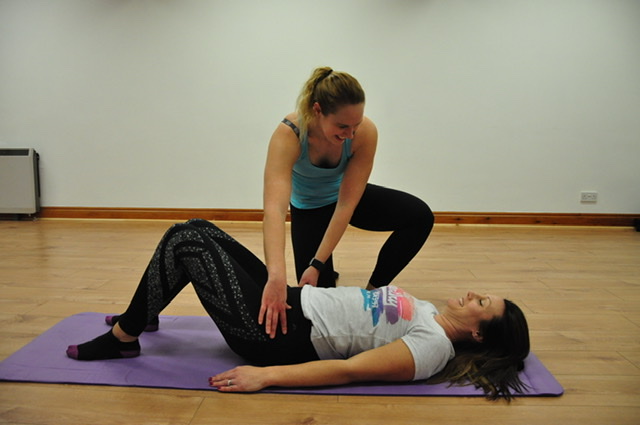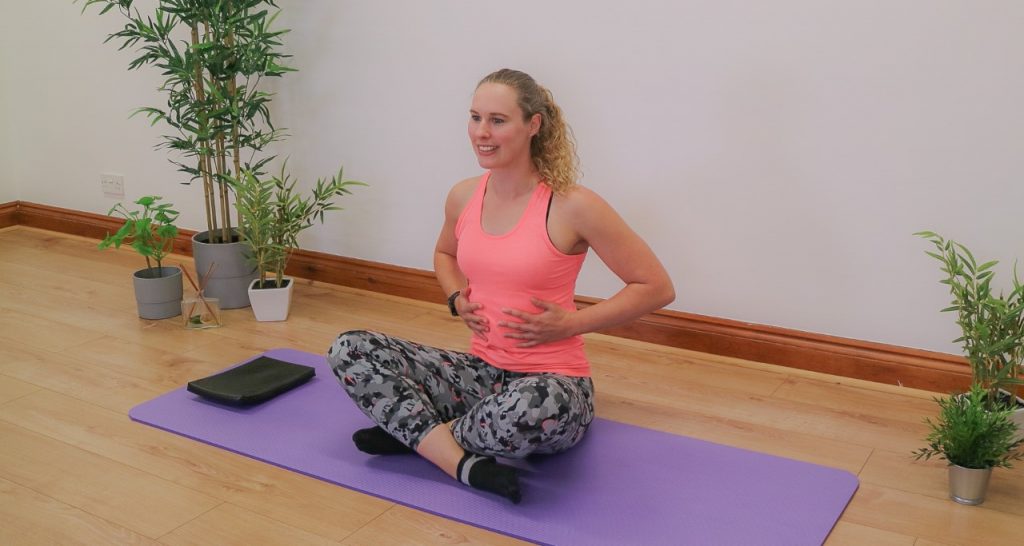There are so many myths surrounding diastasis recti (abdominal separation). So many women restrict or avoid doing activities and exercise that they can, in fact, do safely with diastasis. I want to empower you to get back to the activities that you love, and for you to feel confident doing so. So I thought I’d bust some myths around diastasis to help you understand what exercise you can do if you have diastasis recti.
Firstly, in case you don’t know what diastasis is, it’s the separation of your abdominal muscles. This means the connective tissue that runs down the middle of your abdominals, your linea alba gets stretched. This has to happen during pregnancy to allow space for your growing baby, in fact, 100% of women who reach 35 weeks pregnant will have diastasis.
In most women, the linea alba will naturally gain tension and the gap will reduce back to how it was pre-pregnancy 6 to 12 weeks after giving birth. In some women, the separation will remain, but don’t worry, there are exercises you can do to regain tension & strength. And, in fact, if you’re noticing a separation more than 12 weeks after having your baby, it’s unlikely it will improve without you doing exercises! That’s why I want to spread the word that you should be exercising, and there are exercises you can be doing with an abdominal separation!
Myth #1: Gap size indicates what your core is ready for
The size of your separation isn’t necessarily an indicator of what your core can handle! Did you know that Annie Thorisdottir, 2 X fittest on earth CrossFit athlete has diastasis rectus? She has a core of absolute steel, can lift insane weights, and complete complex gymnastics, all with an abdominal separation.
She would have had help & guidance on how to safely increase her training after having her baby, but managed all this with a diastasis (in fact, she had one before she was pregnant). So, if you have the correct support, there’s no reason why you can’t get yourself back into exercise, including core exercises, even if you do have diastasis rectus.
You can follow Annie on Instagram at @anniethorisdottir if you’d like to get some inspiration from her! She’s amazing!
Myth #2: Breathing into your belly will make your diastasis recti worse
When you inhale deeply, your abdomen expands and your abdominals relax. This is a good thing as your abdominals need to get into a relaxed state to then be able to contract & switch on!
Therefore, deep breathing when doing Pilates or yoga will help with the technique of your abdominal contraction, which, with time & consistency will improve your abdominal separation.
Getting out of breath doing a cardio or HIIT session, which will also cause you to take those deeper breaths & fill your lungs, means that your stomach muscles are getting used to relaxing to allow expansion to oxygenate your body, then they’re working to contract to help your body exhale carbon dioxide. This means your stomach muscles are working in a functional way, getting stronger, and more efficient, which again can help improve the tension of your linea alba, and therefore improve your abdominal separation.
Myth #3: Crunches are the worst thing you can do for diastasis recti
Your technique, and how you engage your abdominals is going to be one of the biggest factors in changing diastasis, not the movement itself. If, when you sit yourself up into a crunch position, you’re noticing your tummy muscles doming (or pushing outwards), and / or coning (a pushing up in the middle of your tummy in a cone-like shape), then this is an indication that your stomach muscles are not functioning effectively when completing this exercise. If you notice this, it’s probably a good idea to try some lower level abdominal exercises to strengthen your stomach muscles. This will all you to focus on getting a strong, linear contraction of your stomach muscles, without any doming or coning occurring. Once you can manage this, then you could give crunches another go and see if your technique has improved.
If you continue to do crunches with poor technique, this can start to have a detrimental effect on your body. By increasing your abdominal pressure by pushing out, this can cause back pain, pelvic floor dysfunction, and worsening of your diastasis. If you can control doming & coning when completing abdominal crunches then they’re an exercise you can bring back into your training programme should you wish!
Myth #4: The width of your diastasis recti affects how well your core can function
It may sound obvious, but actually how well your core is functioning will affect how well your core functions! It isn’t your diastasis that determines this, but your overall core muscle strength. Hopefully you’ve already come to this conclusion from my previous examples, of how Annie Thorisdottir can be insanely strong & fit despite having a diastasis, and how you can still do crunches with a separation.
To check the function of your core, the technique of your abdominal contraction, and to work through a programme that’s right for you & your current level of core function, book yourself in with your local women’s health physio. I’m based in Billericay, Essex if you’d like to see me – you can find out more about my appointments & availability here.
If you’re suffering from diastasis, I hope this helped put your mind at ease, as I find there is so much fear in mums because of this change. If you’d like more support with your recovery after having your baby, my free 12 week recovery guide can help you! If you enter your details below, you’ll be sent my free download, to help you recover from childbirth:
Please note that by entering your details you are signing up to my mailing list, from which you can unsubscribe at any time.



